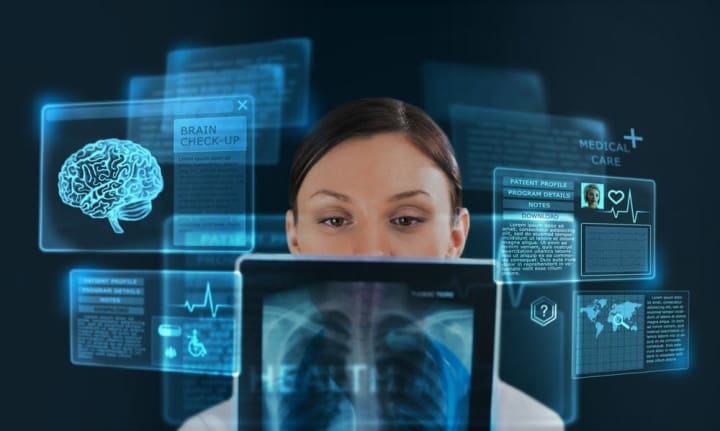The Integration of Technology in the Field of Medicine: Beneficial or Detrimental?
To what extent has technology impacted the medical field?

The average life expectancy was 47.3 years in the early twentieth century recorded between 1900 and 1950. This number has gradually increased over time, resulting in the life expectancy of the twenty-first century to be 77.9, recorded between 2000 and 2007 (Arias, 2014). This drastic increase is greatly influenced by medical advancements that have aided the quality of medical attention patients receive. The field of medicine has seen considerable innovations under the foundation of technology; such said progression has caused a significant shift in the way we perceive and approach healthcare. Physicians have undergone a substantial change in the way they practice medicine: having technology facilitate the collection, accessibility, and tracking of patient information that results in a refined delivery of care. Subsequently, the integration of technology has further accommodated patient necessities by increasing the accessibility of healthcare services and the accuracy of the assistance. Equally important, technology provides an educational platform which is indispensable in engendering proficient and exemplary healthcare providers. That is to say, technological strategies have been applied as didactic resources for medical students. Undoubtedly, technology has played a crucial role in the development and growth of science and service in the medical field.
The implementation of technology in medicine has provided convenience and opportunity for clinicians. In 1998 Billie Heister Waldo, a registered nurse, and vice president of HBO and Co., a software company dedicated to providing clinical and patient care solution software, acknowledged that Information Technology (IT) being implemented in healthcare facilities can collect and manage patient information without the need of human maintenance (Waldo, 1998). Hence, the application of a technological information database will make the process of keeping, tracking, and accessing patient information significantly easier and more effective for physicians, considering the systematic software relieves tasks in direct relation to obtaining patient data and history. Similarly, Yannis Pappa, Deputy director of the eHealth unit in London Imperial college, and research associates conducted a study focusing on the use of computer-assisted history-taking systems (CAHTS) (Pappas et al., 2011). CAHTS is a program primarily being adopted in the United States and the United Kingdom, however, the study was conducted in the U.K. Although the U.K and the U.S arguably have similar conditions and rates of development, there are possible discrepancies that would limit the application of the study’s findings to the U.S. The study found that the use of a computer-based history-taking system, a tool utilized by clinicians to collect patient history prior to any consultation, saved clinicians time as well as provided the basis to conclude a more precise diagnosis. However, the accuracy of a diagnosis is dependent on the information supplied by the patient. While patients felt comfortable sharing sensitive information spared of any judgment, the system is restricted to a question-answer format and does not carry the potential to sense non-verbal signs that would aid a diagnosis (Pappas et al., 2011). Therefore, computer-assisted history-taking systems will require human regulation and contribution, but will undeniably assist physicians in daily processes. Additionally, Pappa's findings support Waldo's argument that the use of information technology as a patient information database will facilitate a physician's job as well as improve patient care.
As technology surfaces with new and innovative ways to assist a physician’s job, it will unquestionably affect the care and service a patient receives. Fortunately, Telehealth and Telemedicine have risen to possibly ameliorate patient-doctor communication challenges. "Telehealth is a fast-growing sector in healthcare, [consisting of a variety of technologies to exchange information across locations and improve access, quality, and outcomes across the continuum of care" (Edmunds, 2017). To reiterate, Telehealth is a methodical employment of technology for the purpose of promoting access to health practices and services. A potential result of Telehealth and Telemedicine, if administered correctly, is the amelioration of patient care quality. The importance of telecommunication in healthcare was emphasized by Justin Collins, a urology consultant in St. Peter's hospital. What Collins refers to as "web 2.0" for doctors is a platform for telecommunication between physicians, students, and most importantly, patients. With the application of "web 2.0", physicians can reach patients in remote regions or internationally, removing any limitations or restrictions in regards to patient accessibility of specialized services (Collins et al., 2012). Furthermore, the benefits of Telehealth are accentuated by its potential to connect patients to a wide variety of physicians, thus providing them with desired or needed specialized care. As aforementioned, Telemedicine is not limited to patient-doctor communication, it is also a source for physicians to interact. Due to this, Telemedicine is most beneficial to patients in hospitalization cases. In a case study conducted by Rahul Sharma, an emergency medicine primary specialist at NewYork-Presbyterian Hospital, and research associates found that Telecommunication between physicians in urgent situations improved the care and outcome of patients. In other words, the ability for physicians to reach out and connect with a specialist in that field provided counseling and guidance for patient treatment and diagnosis. This ultimately resulted in refined delivery care and improved patient outcome (Sharma et al., 2017). To abridge, the amalgamation of telecommunication with medicine connects physicians to patients, to each other, and even to students, allowing for Telemedicine to carry the potential to improve the delivery and accuracy of treatment and care for patients.
How It Is Being Introduced to Incoming Medical Professionals

In order for technology to aid physicians and improve the quality of patient care, technology needs to be and is increasingly being integrated as didactic resources for medical students. Dr. Jeremy T. Ward, a professor in the department of medicine at King’s University, illustrates the importance of implementing the utilization of technology in medical schools and states that "communication and information technology can be used to enhance the learning and teaching environment" (Ward, 2001). Previously mentioned was the use of Information Technology and Telehealth in medical establishments; technological practices alike are exponentially being used by hospitals, clinics, and physicians. Consequently, as technology is becoming a central idea behind medical execution, medical colleges are progressively integrating its use. Parallel to Ward, Dr. Siraj Dawd, Professor of Medicine at the University of Wisconsin, stresses the importance of technology in a learning environment as a means of communication and sharing information. Telecommunication can be of optimal use in medical education, as students can interact with teachers at an international range. This is most beneficial in developing countries where the accessibility to proper medical education is limited (Dawd, 2016). While technology has become an integral feature of a classroom environment, the use of technology towards medical education is not restricted to a classroom. Justin Collins notes the use of "web 2.0" in the operating room between mentor and mentee. Through this communicative platform, surgeons can interact in real-live time. The opportunity for an inexperienced surgeon to be guided through a procedure, learning and being advised by a fellow surgeon now becomes possible (Collins et al., 2012). In brief, the implementation of technology in medical education has provided students with a platform to share, learn, and interact.
When looking at the integration of technology in the field of medicine, it is apparent that it has brought about innovation and changes to traditional approaches. Technological practices such as computer-assisted history-taking systems, information, communication technology, Telehealth, and Telemedicine have all contributed to the modernization of medicine; thus impacting physicians and influencing the education medical students receive. Moreover, the application of technology has made a conscious effort in facilitating a physician’s job and making medical education considerably more interactive. A shared goal of these technological systems is to improve patient care and outcome. By implementing said systems to aid physicians, the possibility of errors are to be, in hope, noticeably reduced. For that hope, medical students are being conditioned to work in a technologically-driven environment today. Hence, the integration of technology has and will continue to positively influence the medical field.
References
Arias , E., Ph.D. (2014, January 6). National Vital Statistics Reports: United States Life Tables, 2009.
Retrieved November 19, 2017, from https://www.cdc.gov/nchs/data/nvsr/nvsr62/nvsr62_07.pdf
Collins, J., Dasgupta, P., Kirby, R., & Gill, I. (2012). Globalization of surgical expertise without losing
the human touch: utilising the network, old and new. BJU International, 109(8), 1129-1131.
doi:10.1111/j.1464-410X.2012.10989.x
Dawd, S. (2016). The Promise of E-Platform Technology in Medical Education. Ethiopian Journal Of
Health Sciences, 26(2), 171-176. doi:10.4314/ejhs.v26i2.11
Edmunds, M., Tuckson, R., Lewis, J., Atchinson, B., Rheuban, K., Fanberg, H., & ... Thomas, L. (2017).
An Emergent Research and Policy Framework for Telehealth. Egems (Generating Evidence &
Methods To Improve Patient Outcomes), 5(2), 1-10. doi:10.13063/2327-9214.1303
Pappas, Y., Anandan, C., Liu, J., Car, J., Sheikh, A., & Majeed, A. (2011). Computer-assisted
history-taking systems (CAHTS) in health care: benefits, risks and potential for further development. Informatics In Primary Care, 19(3), 155-160.
Sharma, R., Fleischut, P., & Barchi, D. (2017). Telemedicine and its transformation of emergency care: a
case study of one of the largest US integrated healthcare delivery systems. International Journal
Of Emergency Medicine, 10(1), 1-4. doi:10.1186/s12245-017-0146-7
Waldo, B. H. (1998). Information Technology: Strategies for Success. Nursing Economic$, 16(1), 33-43.
Ward, J. T., Gordon, J., Field, M. J., & Lehmann, H. P. (2001). Communication and information technology
in medical education. Lancet, 357(9258), 792.
About the Creator
Vanessa Cid
I believe in success through hard work & dedication. My motto in life is "If you want something, work hard & you will achieve it". I am a progressive thinker & respect each person’s space & values.






Comments
There are no comments for this story
Be the first to respond and start the conversation.